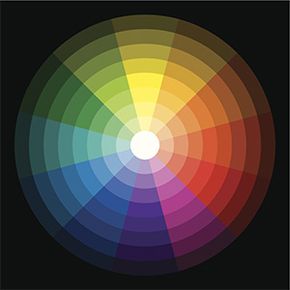Here's a brain-melter — our eyes don't provide us with a full visual picture of the world around us. In fact, there are plenty of things we can't see, like ultraviolet wavelengths or impossible colors like stygian blue.
There's actually no such thing as blue. Or red, or green, or fuchsia or lavender. In reality, there is no tangible, absolute thing called "color." Color exists purely in our minds. (Dude!)
Advertisement
A banana, for example, is not inherently yellow. To prove it, stumble down to your kitchen in the middle of the night and hold a banana in front of your face. What color is it? Kind of a dirty grayish black, but definitely not bright yellow. That's because colors are not emitted from objects; they are reflected. A banana is yellow because when visible light bounces off a banana, it shines back yellow.
How does it work? White light — such as sunlight or the light from a bright light bulb — is composed of wavelengths spanning the entire visible spectrum. When white light passes through a prism, you can see all of the spectral colors in the spectrum: violet, indigo, blue, green, yellow, orange and red.
When white light shines on a banana peel, something incredible happens. A natural pigment in the banana peel called xanthophyll is chemically programmed to absorb certain wavelengths and reflect others. The dominant reflected wavelength of xanthophyll is yellow.
But the yellow of that banana still doesn't exist. It only starts to exist when the reflected light from that peel is detected by millions of color-sensing cells in your retinas called cones. There are three types of cone cells, (blue, red, and green cones), each responsible for sensing a different wavelength of light. The cones send electrical impulses to the brain, where the data is processed into a single recognizable color: yellow [source: Pappas].
The moral of the color story is this — without our visual system and without our brains, colors don't exist. And even when they do, it's only in the mind of the beholder. Which leads to a fascinating question: What if there are colors within the visible spectrum that our cones and brains can't see? In fact, there are. So-called impossible colors or forbidden colors break the biological rules of perception. But some researchers think they've discovered a way to see the impossible.
Let's start by digging deeper into the science of color perception.
Advertisement


